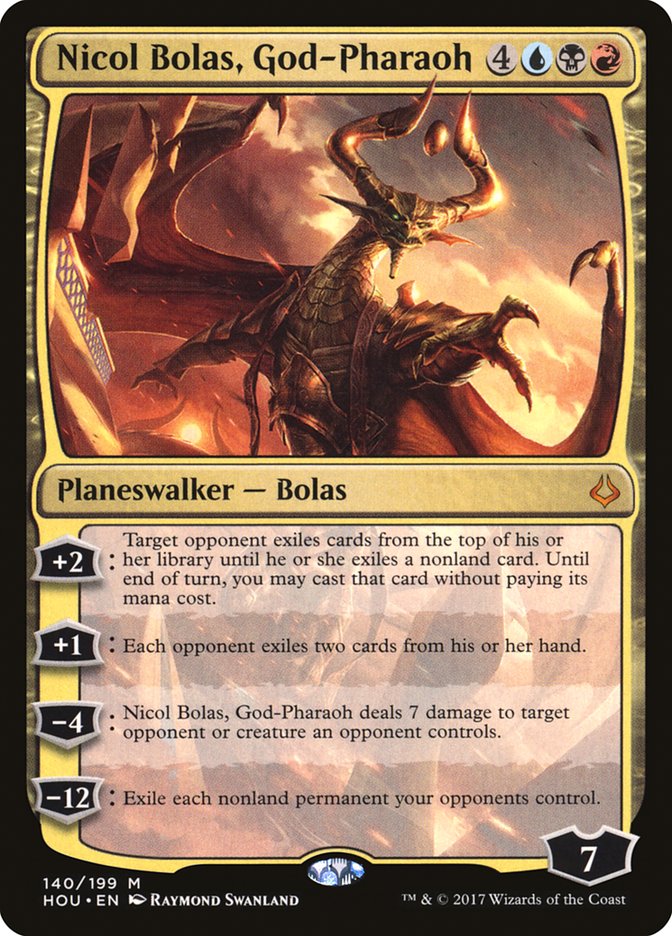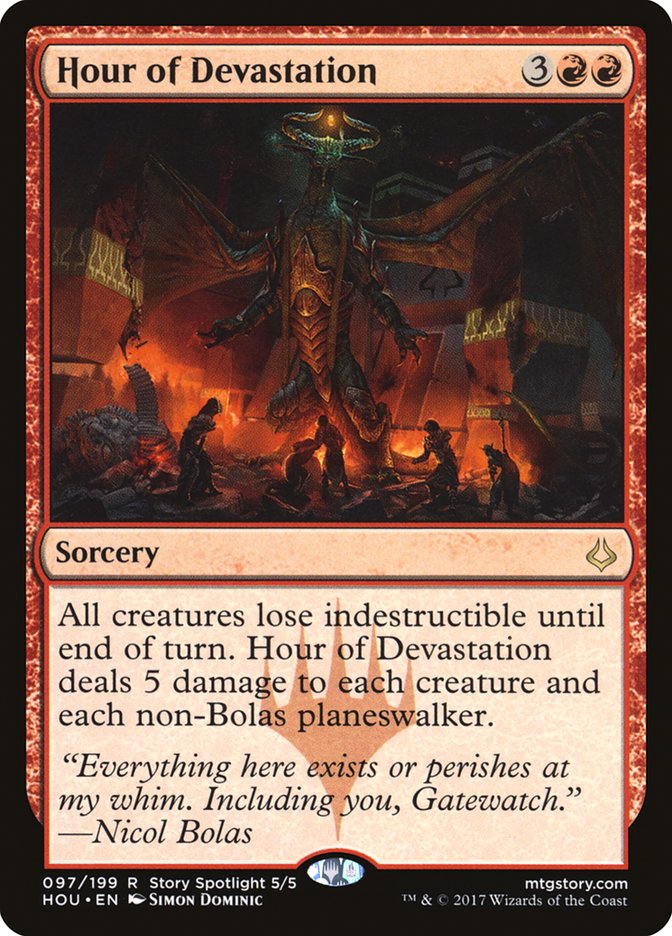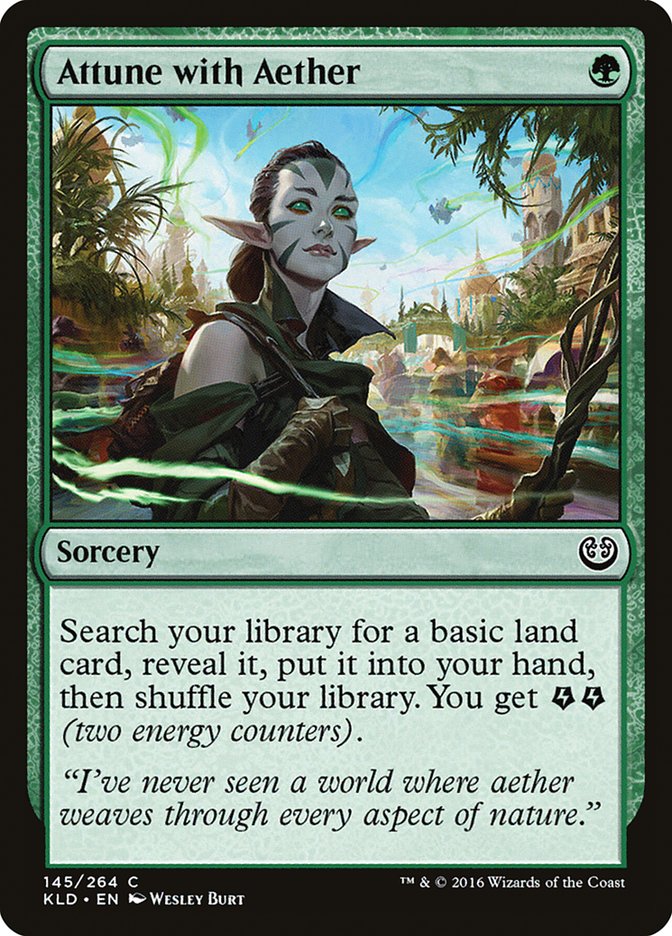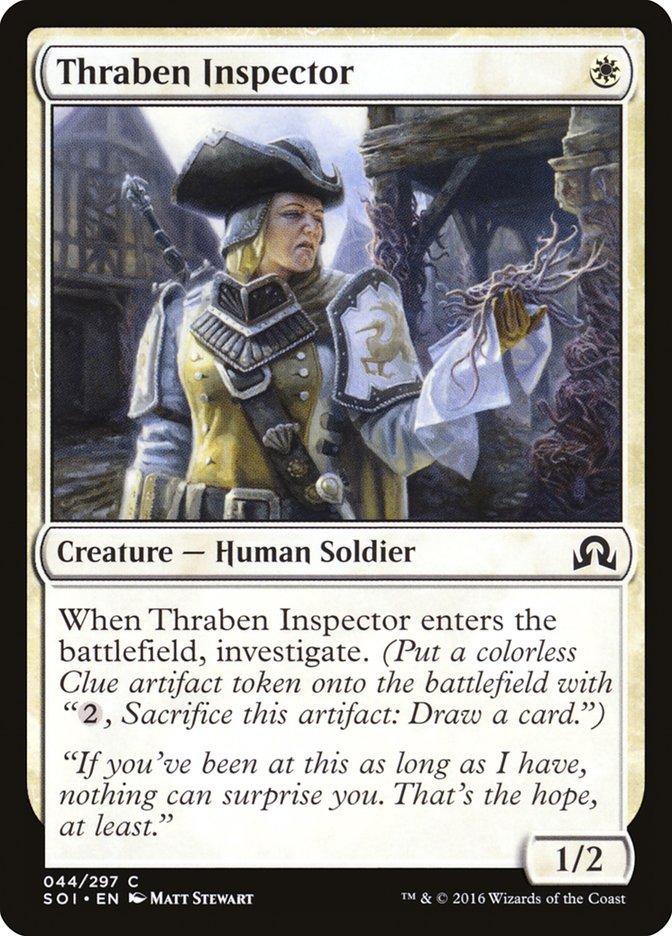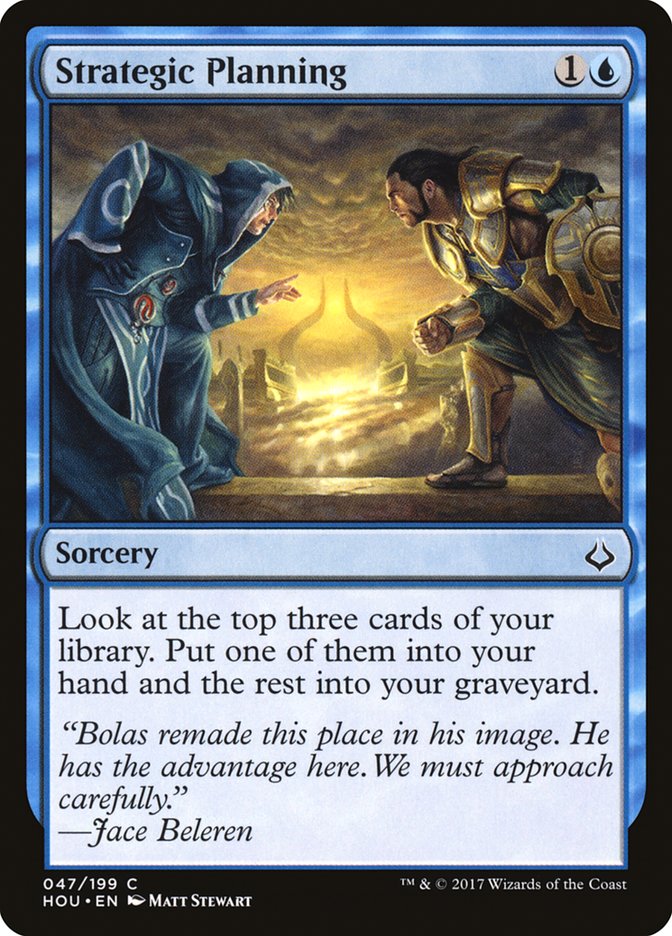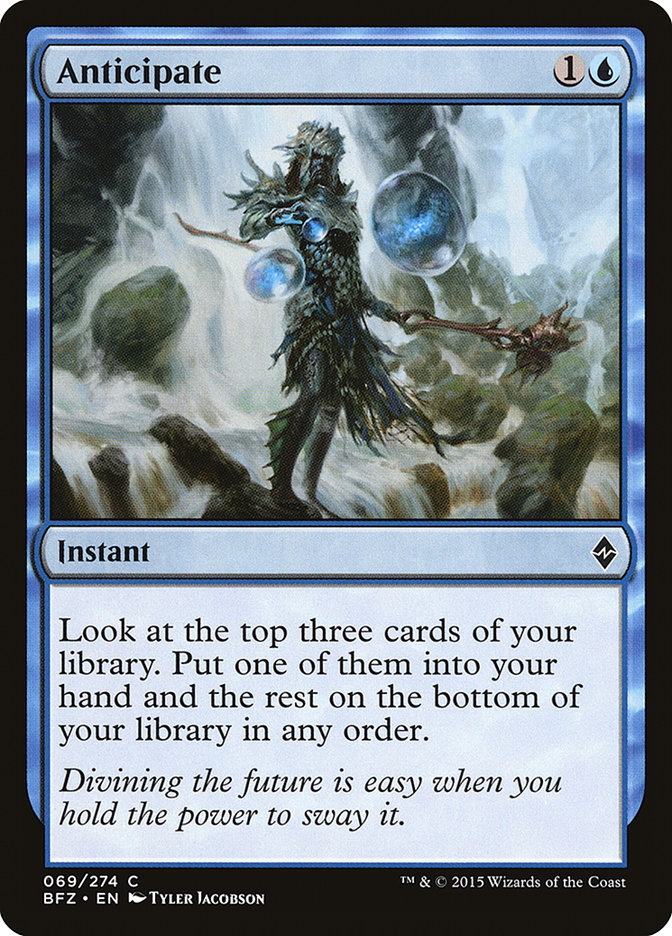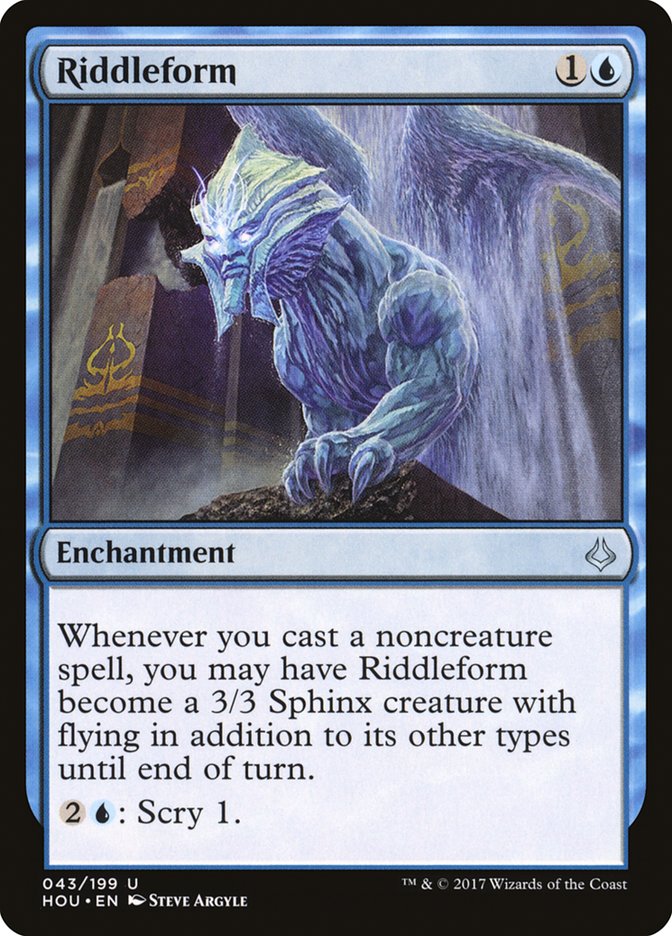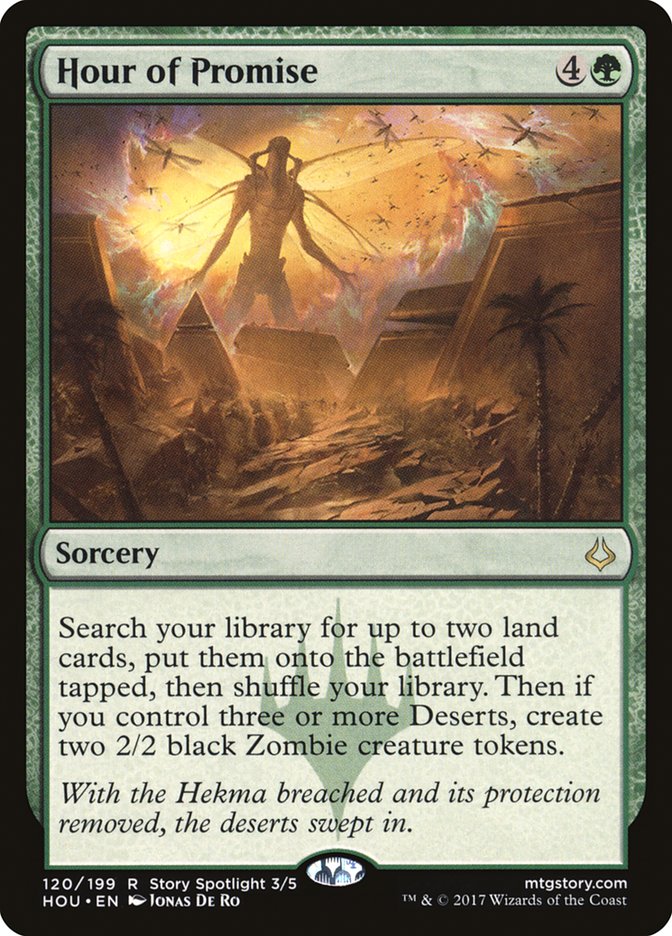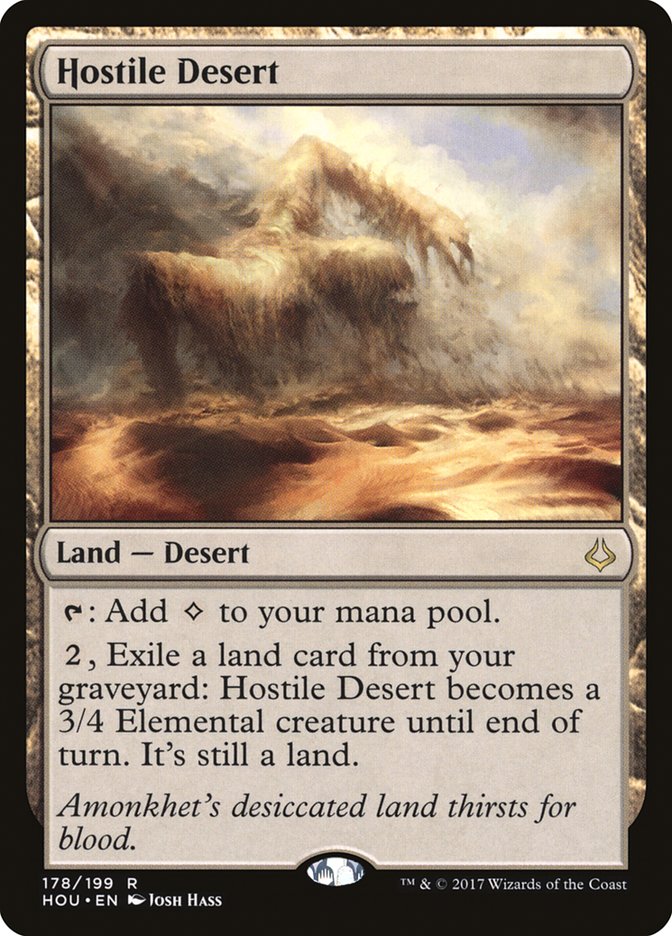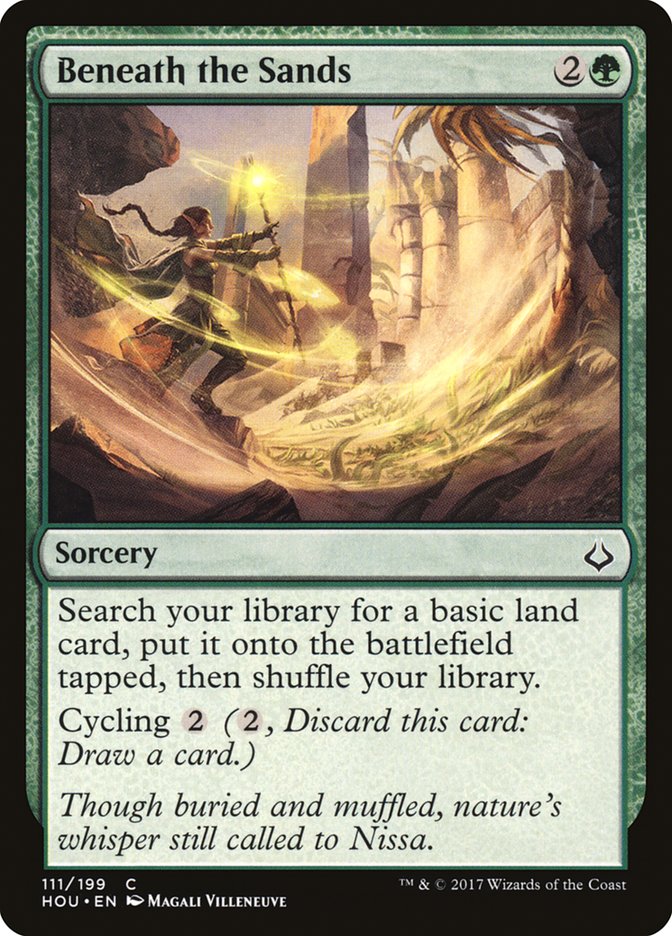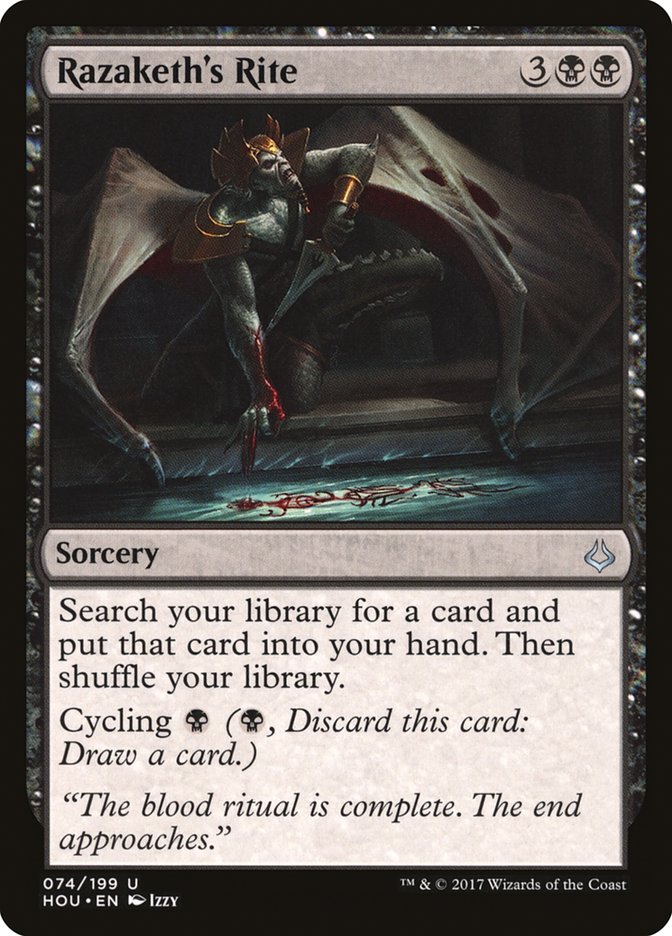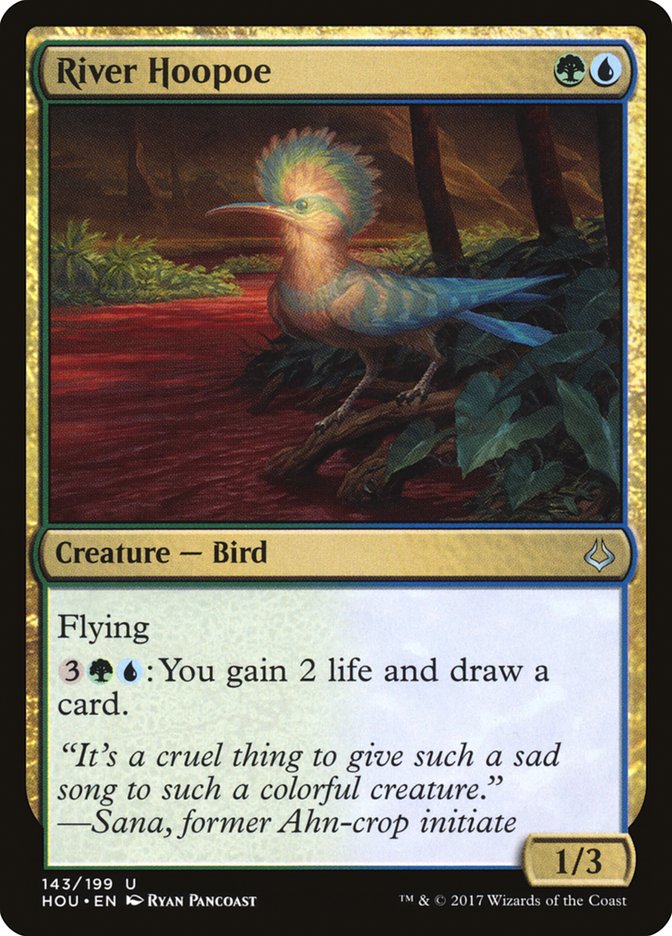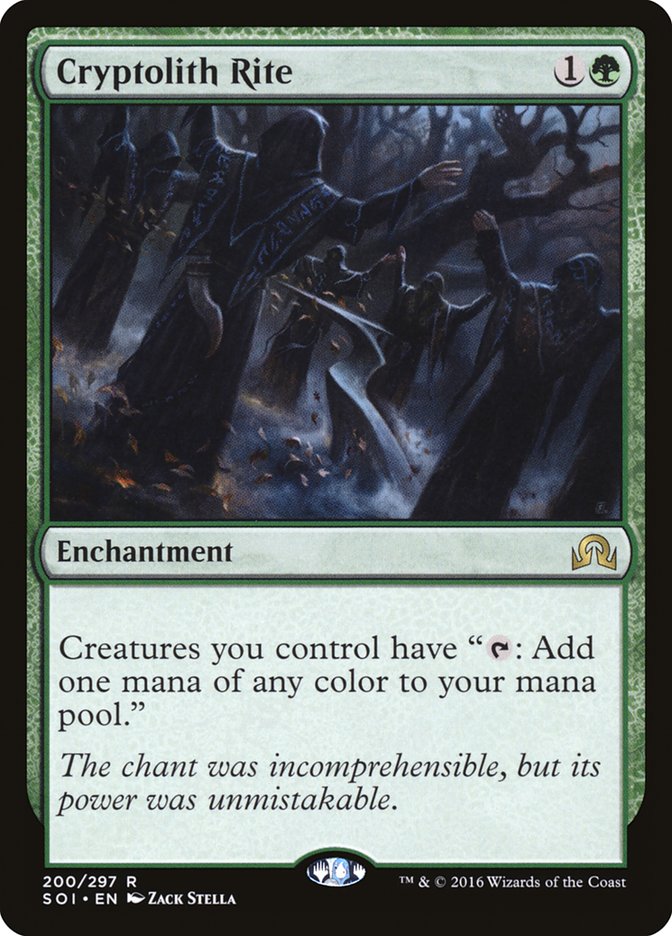Looking over a new set is a daunting task.
Thousands of hours of design and development go into each set, and as a player, your first read-through over the final card list is an attempt to unpack all those hours in a single shot. It is very easy to be distracted by the big and flashy cards, and very easy to miss the cards that will end up making major impacts on Constructed formats.
Flashy mythic rares are often nothing more than a distraction.
Yes, Nicol Bolas, God-Pharaoh is a playable and powerful finisher in the new Standard format. It’s also fairly clear what kind of deck is going to want him, as his expensive and prohibitive mana cost is a very limiting factor. Hour of Devastation is a powerful new sweeper, but we already have similar cards to it, and again it’s fairly clear what kind of decks are going to want it. The Scarab God is just a card with a ton of words on it that’s mostly unplayable.
The thing is that these sorts of “marquee” cards end up much less important to the overall landscape of Standard than other, more ubiquitous cards that often get looked over at first.
Which card has been cast more in Standard tournaments this year, Attune with Aether or Glorybringer?
Which card has been cast more in Standard tournaments this year, Thraben Inspector or Gideon, Ally of Zendikar?
The list could go on and on, but the point is that the most important cards in Standard are often just role-players that fill important roles in multiple decks. Nobody is going to argue that Thraben Inspector is a more powerful card than Gideon, Ally of Zendikar, but Thraben Inspector’s flexibly and utility make it a much more useful deckbuilding tool across multiple decks.
As such, when I take my first look at a new set, I’m not looking for the next Gideon, Ally of Zendikar. I’m looking for the Thraben Inspectors— the cards that fill unique roles across multiple decks and can alter what is possible for our Standard decks going forward.
Let’s see what Hour of Devastation has to offer.
Hey, didn’t this card used to be like $100?
A somewhat obscure Portal: Three Kingdoms reprint, Strategic Planning is a very solid little card. Now, Anticipate is already legal in Standard, and it’s fairly well documented how much disdain I have for Anticipate. As such, why am I interested in Strategic Planning?
Because putting cards in your graveyard is awesome, that’s why.
Anticipate tries to get by on rate alone; two mana gets you a mild amount of card selection at instant speed. Unless you have Thing in the Ice or some other payoff in your deck for casting multiple spells, Anticipate just does what it does and that’s it.
Strategic Planning, on the other hand, is a pretty big boon to any blue deck interested in using its graveyard. The most obvious application in current Standard is enabling delirium, but there are always other paths that can be taken as well. Maybe you want to put Haunted Dead or Stitchwing Skaab in your graveyard to help bring back Prized Amalgam or emerge Elder Deep-Fiend? Maybe you want to put some fatties in the graveyard to reanimate with Liliana, Death’s Majesty? Maybe you want to make your Enigma Drake larger? Take Inventory? Cryptic Serpent?
Strategic Planning is a card rife with deckbuilding possibilities, and one I can’t wait to brew with.
Another somewhat unassuming card that has been glossed over is Riddleform. It may look like many of the odd enchantment creatures that have come before it, but the rate of a 3/3 flier for only two mana is very good. It is also immune to sorcery speed removal and sweepers and provides some extra value in late games.
Normally, cards like this fall short because it is difficult to meet the condition every single turn. If you’re playing Glint Hawk Idol, you run out of artifacts; for Halcyon Glaze, you run of creatures. However, noncreature spells, especially card-drawing instants and sorceries, do a very good job of self-perpetuating. You also gain the benefit of being able to animate it on your opponent’s turn with instants.
There are already a number of good prowess cards and cantrips in Standard, and Riddleform looks like it would play very nicely next to Thing in the Ice, Stormchaser Mage, or Thermo-Alchemist. We are a little light on good burn spells, but solid threats like Riddleform can perhaps cover that deficiency.
Speaking of prowess enablers, let’s look at Crash Through. No, Crash Through is not some sort of groundbreaking Magic card. It’s what you’d expect from a cheap cantrip— a marginal effect with “draw a card” attached. However, there is one unique thing about it.
There are currently three one-mana cantrips available in Standard in blue and red, but the big drag on all of them is that they require a creature to target. This means they are often unplayable on turn 1, and in the case of Slip Through Space or Expedite, you run the risk of getting blown out if they Fatal Push your creature before the Slip Through Space resolves.
Crash Through doesn’t have this problem. You can cast it whenever and will always draw the card, and giving trample to cards like Enigma Drake, Awakened Horror, or any prowess creature is not irrelevant.
It is fairly likely that Crash Through will see little play, but as a deckbuilder it is very important to be aware of the unique tools you have available to you in every format.
Okay, maybe marginal cantrips and the idea of playing Bedlam Reveler as soon as possible don’t appeal to you. How about casting Ulamog, the Ceaseless Hunger on turn 5?
At first glance, Hour of Promise looks like an Explosive Vegetation with a whole bunch of words on it and a higher mana cost. Explosive Vegetation may not seem that exciting, but don’t forget it did win me $20,000 a year and a half ago:
Creatures (18)
- 2 Dragonlord Atarka
- 2 Den Protector
- 4 Hangarback Walker
- 2 Oblivion Sower
- 4 Ulamog, the Ceaseless Hunger
- 4 Jaddi Offshoot
Planeswalkers (4)
Lands (25)
Spells (13)

As has been noted by many other authors on StarCityGames.com already, Hour of Promise can go get two copies of Shrine of the Forsaken Gods and set you up to cast Ulamog, the Ceaseless Hunger the following turn. Primeval Titan has shown us how amazing getting any two lands can be, and there are many other options as well.
There are numerous great utility lands in Standard and many of them just happen to be Deserts as well. Turning on the secondary clause of Hour of Promise and creating two 2/2 Zombie tokens makes the card quite the value on rate. Cloudblazer has been showing up in Standard lately, and Hour of Promise can be five mana for two 2/2s, and you get to not only select the cards you want to draw but put them right onto the battlefield.
Hour of Promise can do a lot of different things, and I promise it will see significant play over its time in Standard.
Speaking of mana ramp spells, we’ve had it rough lately. Back in the day it was all Farseek, Rampant Growth, and Sakura Tribe-Elder; now we’ve got almost nothing! Hell, I played freaking Map the Wastes in my G/R Eldrazi deck listed above!
While Beneath the Sands is cut from the same three-mana-ramp-spell cloth as Map the Wastes, it also contains a simple and elegant solution to the major problem that ramp spells have always had— you need to play enough of them to draw them early, but don’t ever want to draw them late. Well, now, when you’ve got an excess of mana and need to draw gas, you can just cycle it away and try again!
I know it’s not exactly Doomsday pile-level complexity, but a ramp spell with upside is great if you’re looking to ramp. It also curves into a turn 4 Hour of Promise for an easy turn 5 Ulamog, the Ceaseless Hunger, if you’re into that sort of thing.
And Now for Something Completely Different!
Vile Manifestation is a weird card, but also a card with a ton of potential. Given the copious amount of one-mana cycling cards currently in Standard, it’s not hard to imagine Vile Manifestation getting very large very quickly. Vile Manifestation doesn’t feel like the kind of payoff you want to build around, but rather one that can help slot into existing strategies to either bolster them or provide a different angle of attack.
Imagine a set of Vile Manifestation coming in out of the sideboard of something like Ben Friedman’s New Perspectives deck:
Creatures (8)
Lands (21)
Spells (31)
- 3 Anticipate
- 3 Traverse the Ulvenwald
- 4 Weirding Wood
- 4 New Perspectives
- 1 Approach of the Second Sun
- 4 Censor
- 3 Shadow of the Grave
- 4 Sweltering Suns
- 1 Gift of Paradise
- 4 Haze of Pollen
Sideboard

Creature removal is basically worthless against a combo deck like Ben’s, which means your opponent is highly unlikely to have anything that can kill Vile Manifestation in sideboarded games.
With a number of new sweepers being added to the format, creatureless combo decks and decks based around noncreature threats like Drake Haven or Faith of the Devoted could be primed for resurgence. Vile Manifestation is a unique card that could be a good sideboard tool for them.
Speaking of New Perspectives, Razaketh’s Rite is perhaps one of the scariest tools that the deck gains from Hour of Devastation. As always, the opportunity cost of a one-mana cycling card is very low, and in a deck like New Perspectives, it is actually essential that almost all of your cards have cycling.
Razaketh’s Rite curves perfectly with New Perspectives and can set up some fairly academic turn 5 kills when used in conjunction with Weirding Wood. New Perspectives is a deck that has trouble with consistency, and adding four copies of a tutor that is right in line with the deck’s plan is a no-brainer.
Outside of New Perspectives (or perhaps some other new combo deck), Razaketh’s Rite feels too slow for Standard, but don’t discount how powerful cycling for only one mana is.
Our last card is perhaps the most peculiar, but also the one that speaks to me the loudest.
As a control player, I’ve played a ton of cheap creatures that draw cards in my control sideboards to excellent success.
There’s something to be said for playing one of these creatures on turn two, and then riding it to victory over the course of a long and drawn-out game where it draws you a pile of cards at the end of your opponent’s turn. (Exhibit A.)
On pure stats alone, River Hoopoe compares very favorably to the old card-drawing creatures. Three toughness is an excellent amount, and gaining two life with every activation is also huge in a long, drawn-out control game.
The oddity is that green mana symbol.
Green is not usually a color found in control decks, and requiring green mana on turn 2 is a fairly steep cost— you are not going to be able to easily splash River Hoopoe into your U/B Control deck. Blue and green is a very bizarre color combination for a control deck because of how important removal spells are, which pushes us into three-color control territory. Temur makes the most sense, as Temur Dynavolt decks have already seen some success in the format, but Bant and Sultai are also reasonable options as well.
The other option with River Hoopoe is to embrace the green half of the card. While blue is interested in drawing cards at instant speed, green is great at making a lot of mana quickly. River Hoopoe could be an excellent mana sink for that mana, either in some sort of Cryptolith Rite deck or perhaps some sort of ramp deck.
Pairing lifegain with card draw is very powerful, but finding a home for a double-colored two-drop can be difficult. I’m excited to experiment with River Hoopoe!
The Next Step
After going over the full card list for the set and picking out what cards you think will be important cogs for the future of Standard, the next thing to do is to start putting them in decks! There is no substitute for experience, and experimenting with new cards is the only real way to learn what works and what does not.
My brewing process is going to start with a number of these cards. Where is yours going to start?


